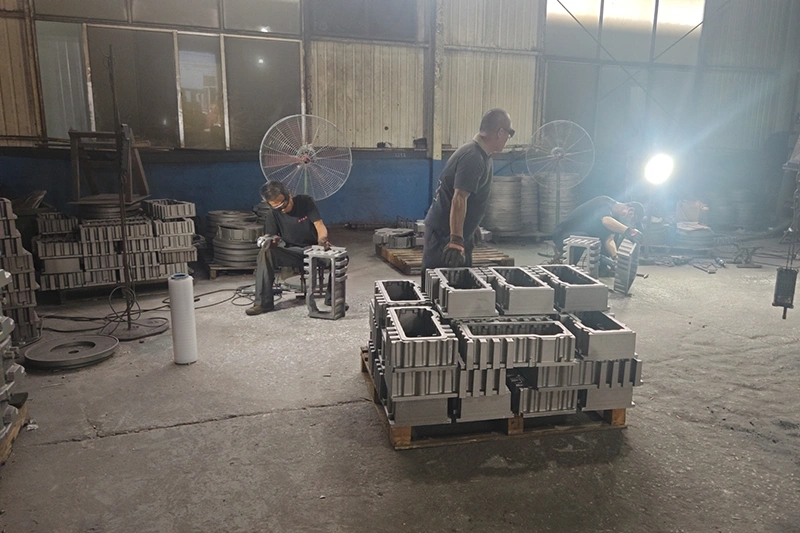Gas porosity is a defect where dissolved gases create bubbles that get trapped as metal solidifies during the casting process. When metal is molten, it can hold much more gas than when it’s solid. As the metal cools, excess gas forms bubbles that become permanent voids in the final casting. These gas pores have smooth, rounded walls and can appear on the surface or hide inside the metal.
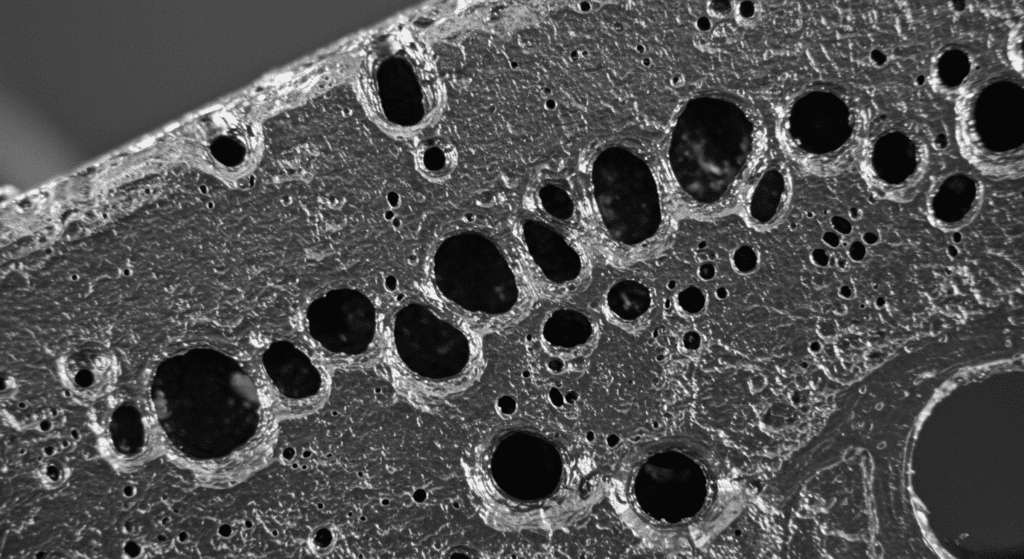
Casting defects from gas come in four main types based on size and location.
Pinholes are tiny gas cavities measuring 0.1 to 2 millimeters across. You’ll typically find them clustered near the top of the mold cavity. These small, round holes are visible to the naked eye and often appear in groups on the casting surface.
Sub-surface blowholes are larger gas bubbles that sit just beneath the surface. You can’t see them from the outside. They only show up when you machine the part or test it with special equipment.
Open holes are large cavities that break through to the surface. These round or oval holes form when trapped gas partially escapes but still leaves a void behind.
Closed internal porosity refers to any gas void completely enclosed within the metal. This term covers all types of hidden gas-related porosity.
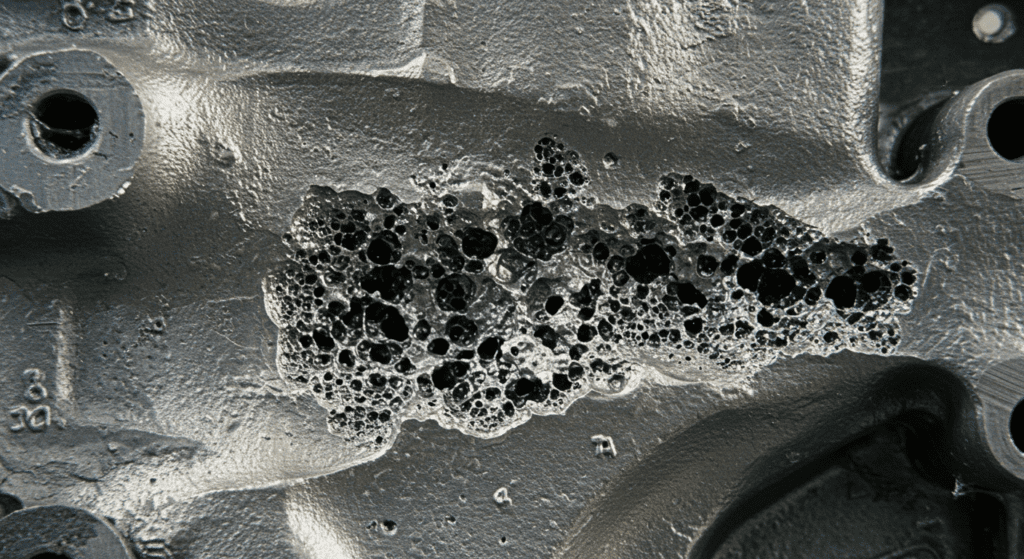
Gas porosity happens when gas dissolves into molten metal or enters the mold and can’t escape before the metal hardens.
Water in molds, cores, or coatings turns to steam when it hits hot metal. This steam decomposes into hydrogen gas. Even humidity in the air can introduce enough moisture to cause problems. In aluminum casting, water vapor reactions are the main source of hydrogen porosity.
Organic binders, mold release agents, and lubricants decompose when exposed to molten metal. They release gases like carbon monoxide, carbon dioxide, or nitrogen. Too much mold spray or hardener can fill your casting with gas bubbles.
Turbulent flow through the gating system creates eddies that pull air into the metal. Without proper venting, this trapped air forms internal blowholes. Blocked or inadequate vents are a frequent cause of casting porosity.
Molten aluminum readily absorbs hydrogen from moisture or flux decomposition. Steel and iron absorb nitrogen and hydrogen. Using rusty scrap increases gas content significantly. Even overheating the metal makes it absorb more gas.
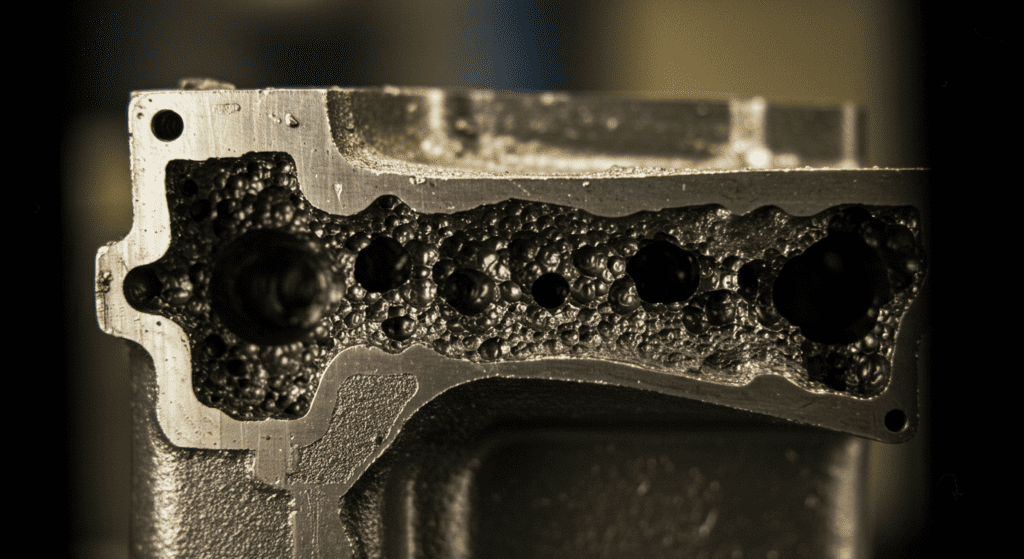
Every gas pore weakens your casting by acting as a stress concentration point.
A casting with just 9% porosity can lose 27% of its tensile strength. Gas pores reduce the effective cross-section of the material. Under stress, round pores can link together to form cracks. This cuts fatigue life short and reduces both yield strength and ductility.
Surface pinholes show up as pits on machined surfaces, causing visual rejects. Internal pores exposed during machining create scrap parts. For pressure-tight applications like hydraulic housings or plumbing fixtures, even tiny pores cause leaks. Interconnected porosity creates leak paths that make castings useless for holding pressure. Gas pores also trap corrosive substances and create turbulence in fluid passages.
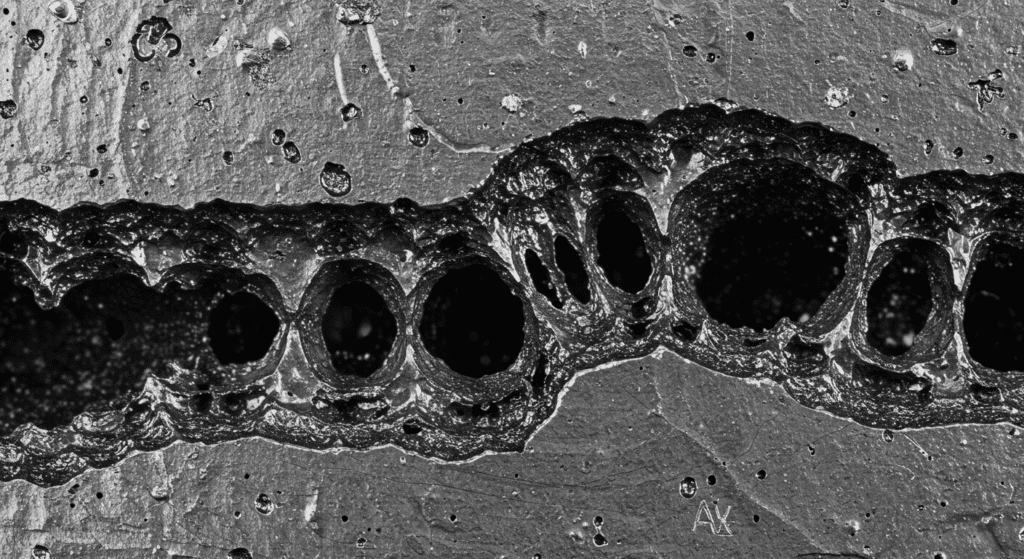
For aluminum, foundries bubble high-purity argon or nitrogen through the melt. Rotary degassing units with spinning impellers work especially well. The purge gas bubbles collect hydrogen and float it out. Vacuum degassing works for both steel and aluminum by stripping hydrogen and nitrogen from the melt.
Molds, cores, and refractories must have zero moisture. Even small amounts create steam that forms hydrogen. Bake cores and molds thoroughly. Cure all coatings and binders completely. Strategic venting at high points lets gas escape during filling.
Smooth flow paths prevent turbulence that traps air. Avoid sharp corners and sudden size changes. Use simulation software to optimize airflow. In die casting, proper shot profiles and vacuum assist evacuate air before metal enters.
Start with dry, clean charge materials. Avoid rusty scrap and minimize remelting. Keep pouring temperatures just above the melting point to reduce gas solubility. Remove slag and oxides that can trap gas bubbles.
Pulling vacuum on the mold cavity removes air before metal enters. This technique dramatically reduces gas-related defects.
When you can’t eliminate all porosity, vacuum-pressure impregnation seals microscopic pores with resin. This won’t improve strength but restores pressure tightness.
Gas porosity remains one of the most common casting defects, but you can control it. Focus on removing moisture, degassing your metal, and designing proper venting. With the right techniques, you’ll produce sound castings free from gas-related problems.

